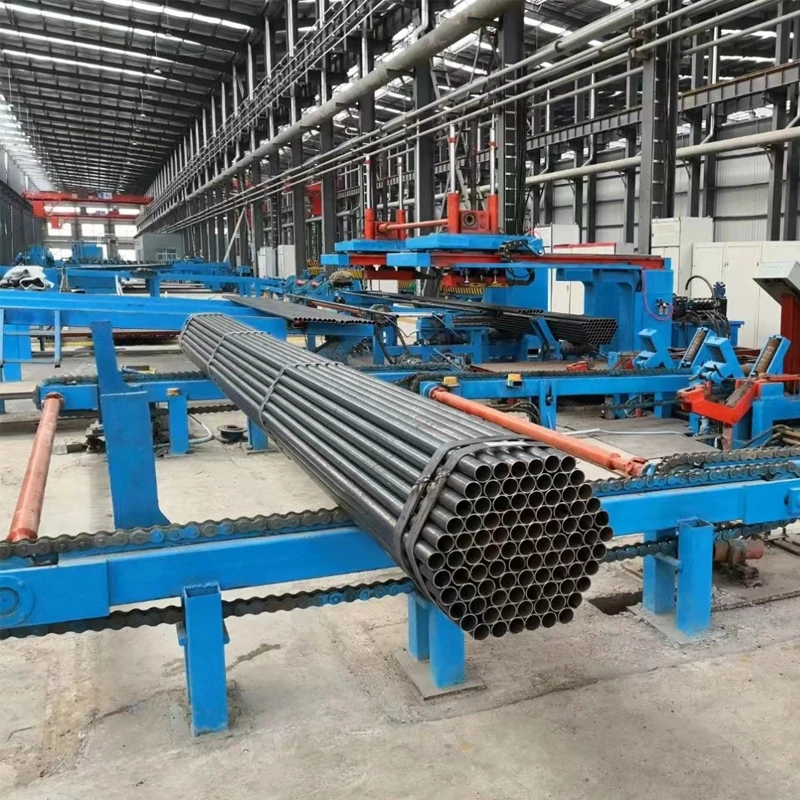PPR Pipe Extrusion Technology for Efficient Water Supply Solutions
Understanding PPR Pipe Extrusion Line An Overview
PPR (Polypropylene Random Copolymer) pipe extrusion lines have become increasingly popular in the construction and plumbing industries due to their durability, lightweight nature, and resistance to corrosion and chemicals. These pipes are primarily used for hot and cold water supply systems, making them an essential component in modern infrastructure. This article will provide a comprehensive overview of the PPR pipe extrusion line, its components, processes, and advantages.
What is a PPR Pipe Extrusion Line?
A PPR pipe extrusion line is a specialized manufacturing system designed to produce PPR pipes through a continuous extrusion process. The key components of this extrusion line include the extruder, die, cooling tank, cutting machine, and coiler. Each of these elements plays a crucial role in ensuring the efficient and accurate production of PPR pipes.
Key Components of the PPR Pipe Extrusion Line
1. Extruder The heart of the extrusion line, the extruder melts the polypropylene granules and converts them into a molten state. It compresses and homogenizes the material using a screw mechanism, ensuring consistent quality during production.
2. Die After the material exits the extruder, it passes through a specially designed die. The die shapes the molten polypropylene into the desired pipe diameter and thickness. This is a critical stage as it determines the final characteristics of the pipe.
3. Cooling Tank Once the pipe is formed, it must be cooled rapidly to maintain its shape and solidify the material. The cooling tank is filled with cold water, allowing the pipe to be cooled uniformly as it exits the die.
4. Cutting Machine After cooling, the pipes are cut to the desired lengths using an automated cutting machine. This ensures that each pipe meets the specified measurements for both residential and industrial applications.
5. Coiler For ease of transportation and storage, the finished pipes can be coiled instead of being cut into straight lengths. The coiling process requires precision to avoid kinks or damages to the pipes.
The Extrusion Process
ppr pipe extrusion line

The process of PPR pipe extrusion involves several critical steps
1. Material Feeding The polypropylene granules are fed into the extruder. The feed rate must be carefully controlled to ensure a steady output.
2. Melting and Homogenization The granules are heated to their melting point while being mechanically mixed by the screw mechanism inside the extruder. This process ensures that the material is uniform and free from any lumps.
3. Shaping The molten material is forced through the die, shaping it into a continuous pipe. The die can be adjusted to create various pipe sizes and wall thicknesses.
4. Cooling The extruded pipe is immediately transferred to a cooling tank, where it is submerged in cold water. This rapid cooling causes the material to solidify and retain its shape effectively.
5. Cutting and Coiling The solidified pipes are then cut into lengths as specified by the customer. If required, they are coiled for convenience during transport.
Advantages of PPR Pipes
PPR pipes offer several advantages that make them a preferred choice for many applications
- Durability Resistant to various chemicals, corrosion, and temperature changes, ensuring a long lifespan. - Lightweight Easier to handle and install compared to traditional materials, reducing transportation costs. - Energy Efficiency PPR pipes have excellent insulation properties, reducing energy loss in hot water systems. - Cost-Effectiveness The manufacturing process is efficient, leading to lower production costs, which can be passed on to consumers.
Conclusion
The PPR pipe extrusion line plays a vital role in the production of high-quality pipes that meet the demands of modern infrastructure. With their numerous advantages, PPR pipes are increasingly becoming a preferred choice for plumbing systems worldwide. As technology advances, the efficiency and capability of PPR pipe extrusion lines are likely to improve, further enhancing their role in construction and industrial applications. Understanding the intricacies of this process not only highlights the importance of innovation in manufacturing but also underscores the significance of PPR pipes in global water supply systems.
-
High Frequency Straight Seam Welded Pipe Production Line-BzZhou Xinghua Machinery Equipment Manufacturing Co., LTD.|Precision Welding, High EfficiencyNewsJul.30,2025
-
High Frequency Straight Seam Welded Pipe Production Line|BzZhou Xinghua|Precision Welding&EfficiencyNewsJul.30,2025
-
High Frequency Straight Seam Welded Pipe Production Line - BzZhou Xinghua|Precision Engineering&EfficiencyNewsJul.30,2025
-
High-Frequency Straight Seam Welded Pipe Production Line-BzZhou Xinghua Machinery Equipment Manufacturing Co., LTD.NewsJul.30,2025
-
High-Frequency Straight Seam Welded Pipe Production Line-BzZhou Xinghua Machinery Equipment Manufacturing Co., LTD.|Precision Manufacturing, High EfficiencyNewsJul.30,2025
-
High Frequency Straight Seam Welded Pipe Production Line-BzZhou Xinghua Machinery Equipment Manufacturing Co., LTD.|Precision Steel Pipe Manufacturing&Industrial EfficiencyNewsJul.29,2025


